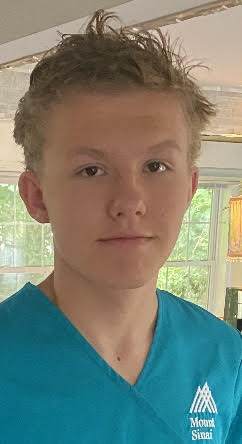Biomaterials
(B-76) Determining the Synergistic Effects of ECM Coating on Axonal Growth in Collagen Gel 3D-Model

Peter Kutuzov
ER Technician
NJIT Albert Dorman Honors College
Fair Lawn, New Jersey, United States- JG
Jonathan Grasman
Assistant Professor
NJIT, United States - JT
JARIN TUSNIM
Graduate Research Assistant
New Jersey Institute of Technology, United States
Presenting Author(s)
Primary Investigator(s)
Co-Author(s)
Peripheral nerve injuries (PNIs) can have detrimental effects on the life of patients and comprise 3% of trauma causes in clinical practice1. PNIs typically arise due to falls or accidents causing a stretch, laceration, or compression of nerves1. While microsurgery and nerve autografts are currently the standards of care, results from clinical trials have shown limited recovery of full motor or sensory function in patients primarily due to prolonged time of denervation2. Recently, there has been a rise in the development of tissue-engineered strategies for peripheral nerve repair. Most existing in vitro models employed to study peripheral nerve regeneration are limited in their ability to capture the full range of biological complexities associated with the extracellular matrix (ECM). The ECM consists of various growth factors, cells, and natural polymers which are essential to peripheral nerve regeneration. Our approach has involved the development of physiologically relevant 3D tissue constructs aimed to mimic the ECM environment to study peripheral nerve repair. To address the limitations in many current in vitro models, we propose to investigate the interactions of several ECM proteins present in nervous tissue (i.e., collagen, laminin, and fibronectin) in a facile 2D system followed by our 3D model with neonatal dorsal root ganglion (DRG). We hypothesize that a collagen gel with hollow channels coated with laminin and fibronectin would be more efficient at peripheral nerve repair than each ECM individually. The development of a more realistic in vitro model will help improve clinical outcomes and the overall prognosis of PNIs.
Materials and Methods::
For 2D studies, collagen hydrogels (6.5 mg/mL) were fabricated in 24-well plates and optimized concentrations of laminin (50 μg/mL), fibronectin (50 μg/mL), or a combination of both laminin and fibronectin were coated on the surface of the hydrogels prior to seeding with DRGs isolated from E16 rat embryos3. A gel with no coating was included as the control. For 3D studies, hollow channels were created within collagen gels by inserting needles into a polydimethylsiloxane (PDMS) frame as per our previous work3. Upon polymerization of the collagen, the needles were removed to form the hollow channels, which were coated with laminin, fibronectin, or laminin and fibronectin to see which combination significantly enhanced axonal growth. Rat embryonic DRGs were seeded within the channels and culture for 5 days, after which the explants were fixed using 4% paraformaldehyde, immunostained against β-tubulin III, and counterstained with DAPI. Average axonal growth was determined through measurements of axonal length using ImageJ software. Statistical analysis was performed to determine whether the observed axonal growth was significant with respect to the control (p< 0.05).
Results, Conclusions, and Discussions::
The results obtained from this study show that DRGs grown directly on the collagen gels coated with different ECM coatings exhibited axonal growth extending radially from the explant as depicted in the 2D collagen gel models (Fig 1A and Fig 1B) and extended along the channel in the 3D collagen gel models (Fig 1C and Fig 1D). Quantification of average axonal length for the various ECM coatings demonstrated that the blend of fibronectin/laminin coating supported significantly longer axonal growth than controls (Fig 1E). Furthermore, preliminary results for peripheral nerve regeneration within a 3D collagen gel model supported the results obtained from the facile 2D system studies, demonstrating significantly enhanced axonal growth in gels coated with a blend of fibronectin/laminin coating compared to the control (Fig 1F). Data from the study exhibits the potential of DRG networks in promoting axonal growth in an ECM-simulating environment using coatings with various ECM proteins. However, future experiments are required in order to reach more conclusive results regarding the effect of combinatorial ECM protein coating on the average axonal length from explants.
Although there has been an increased understanding of the biological complexities associated with peripheral nerve regeneration, there exists a persistent demand for an accurate in vitro model to inform future preclinical studies, as well as clinical trials4. There is thus a need for a microphysical system that would effectively replicate the ECM environment and the synergistic signaling between the ECM proteins and the growth factors which this project aims to fulfill5. The implementation of this model in future studies could potentially be applied to improve the screening of various drug treatments for peripheral nerve regeneration which can lead to more effective tissue grafts, a more optimal prognosis of PNIs, and an improved understanding of peripheral nerve regeneration. Further experimentation would study the synergistic effects of ECM coating and neurotrophic factors on axonal growth in a collagen gel 3D model. With this research, we hope to develop a more effective in vitro model by simulating a more realistic representation of the ECM/growth factor environment observed during peripheral nerve growth and repair.
Acknowledgements (Optional): :
We thank funding from startup funds provided by NJIT and the Undergraduate Research and Innovation (URI) Summer Fellowship Program.
References (Optional): :
Acute Nerve Injury - Statpearls - NCBI Bookshelf, www.ncbi.nlm.nih.gov/books/NBK549848/. Accessed 14 July 2023.
Höke, Ahmet, and Thomas Brushart. “Introduction to Special Issue: Challenges and Opportunities for Regeneration in the Peripheral Nervous System.” Experimental Neurology, vol. 223, no. 1, 2010, pp. 1–4, https://doi.org/10.1016/j.expneurol.2009.12.001.
Grasman, Jonathan M, et al. “Tissue Models for Neurogenesis and Repair in 3D.” Advanced Functional Materials, U.S. National Library of Medicine, 28 Nov. 2018, https://www.ncbi.nlm.nih.gov/pmc/articles/PMC7241596/.
Rayner, Melissa L D, et al. “Developing an in F Model to Screen Drugs for Nerve Regeneration.” Anatomical Record (Hoboken, N.J.: 2007), John Wiley & Sons, Inc., Oct. 2018, https://www.ncbi.nlm.nih.gov/pmc/articles/PMC6282521/.
Logan, Ann, et al. “Neurotrophic Factor Synergy Is Required for Neuronal Survival and Disinhibited Axon Regeneration after CNS Injury.” Brain, vol. 129, no. 2, 2005, pp. 490–502., https://doi.org/10.1093/brain/awh706.
